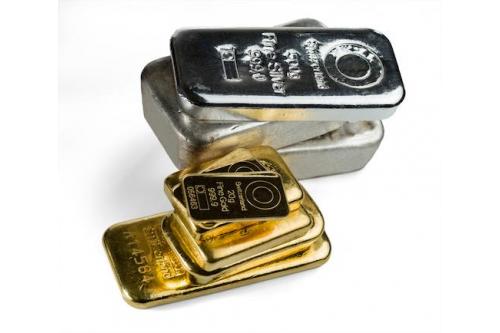
What the Gold:Silver Ratio Is Telling Us About Precious Metals
Amidst all the ups and downs in gold and silver prices, perhaps one should not ignore what the price ratio between the two precious metals is telling us. Ahead of the Easter weekend, this ratio – the GSR – was sitting at around 77, down a little from the 80 plus level it had reached at the beginning of February, but still way off its five years high of over 120 in March 2020, or low of around 63 of just under a year later. (A high GSR is a determinant of a weak silver price, while a lower one suggests that investment in silver is more positive at the time than in its yellow sibling metal).
Both these levels represented severe spikes up and down, respectively, with the average over the period probably being in the high 70s, which seems to be pretty much where it may be settling now. The out and out silver bulls will tell you, though, that the historical GSR level may be nearer 16 and that one day silver will revert to that level – or even that the ratio should be nearer the balance of silver and gold percentages in the earth’s crust, or the corresponding annual amounts mined. Still, in our view, both these figures are total irrelevances. The prices for both metals are entirely due to what the markets are prepared to pay for them at the time in question.
The so-called ‘historic’ silver price was set mainly at a time when silver coinage was an integral part of the world’s monetary system.
The level was also achieved back in 1980 in a false market spike when the Hunt Brothers were buying up all the silver they could lay their hands on in a supposed attempt to ‘corner’ the world’s silver market, which they were ultimately unsuccessful. We would argue that silver is no longer a significant part of the world’s monetary system, whereas gold remains a considerable constituent of global central bank reserves. Thus in our opinion, silver is NEVER going to get back to a 16:1 GSR and a more reasonable level for a GSR average over time is perhaps around 65 or 70:1 – which at the current gold price might suggest silver at around $28-30.
And that is quite possibly even an over-optimistic assessment of where silver should be and would require a fairly sharp boost in silver demand to achieve it.
Silver does tend to move along with the gold price, despite its usage being primarily industrial, albeit predominantly in demand growth areas – photovoltaic and medical - which may benefit the metal price in the longer term. We have forecast a gold price of around $2,250 by the year-end, which at a GSR of 70 would put silver at, or around, $32 by then if prices develop as we anticipate and the GSR does come back down to this level. However, there are a number of uncertainties ahead – for example, if the Russia/Ukraine conflict should come to an end, gold and silver prices could fall back, although the longer-term effects on inflation, if the economic sanctions on Russia continue, may keep gold and silver prices elevated.
Currently, inflation and the fear that the Fed moves to control it may push the US economy into a recession. If these prove to be particularly aggressive, they are holding the gold price up to and could well propel it to the higher levels we have been predicting. In this respect, gold is behaving like a prime safe-haven asset, and the silver price has been rising as it tends to do.
As we have pointed out in previous articles, inflation pressures are high due to two concurrent factors. These are the strains on the economy resulting from the exit from the measures taken to control the Covid-19 pandemic, and added to over the past few weeks by the effects on the global economy of the stringent and seemingly ever-increasing economic sanctions being imposed on Russia to try and persuade it to end its invasion of Ukraine.
The longer the economic sanctions on Russia persist, the longer these inflationary pressures are likely to continue. The anti-Russian feeling in the West is such that these sanctions may remain in place even if there is an end to the Ukraine war – not that one seems any nearer - both sides seem resolute in their stated positions. Consequently, we see the gold price strengthening and silver perhaps rising a little faster, as it tends to do in a rising gold price scenario, perhaps bringing the GSR down a further few points.
While the GSR itself is not a prime mover in gold price determination, it serves as a momentum indicator. Silver tends to follow a more volatile trading pattern than gold, and sometimes, it precedes it directionally. As it tends to rise faster in a rising gold price scenario, a fall in the GSR tends to be a guide to strength ahead in the gold price, although there is perhaps something of a ‘chicken and egg’ problem here. But overall, if the GSR is showing a downwards trend, it suggests the gold price is rising and silver along with it – and vice versa. Therefore, do not disregard it as an important bellwether for the likely direction of the gold price.






